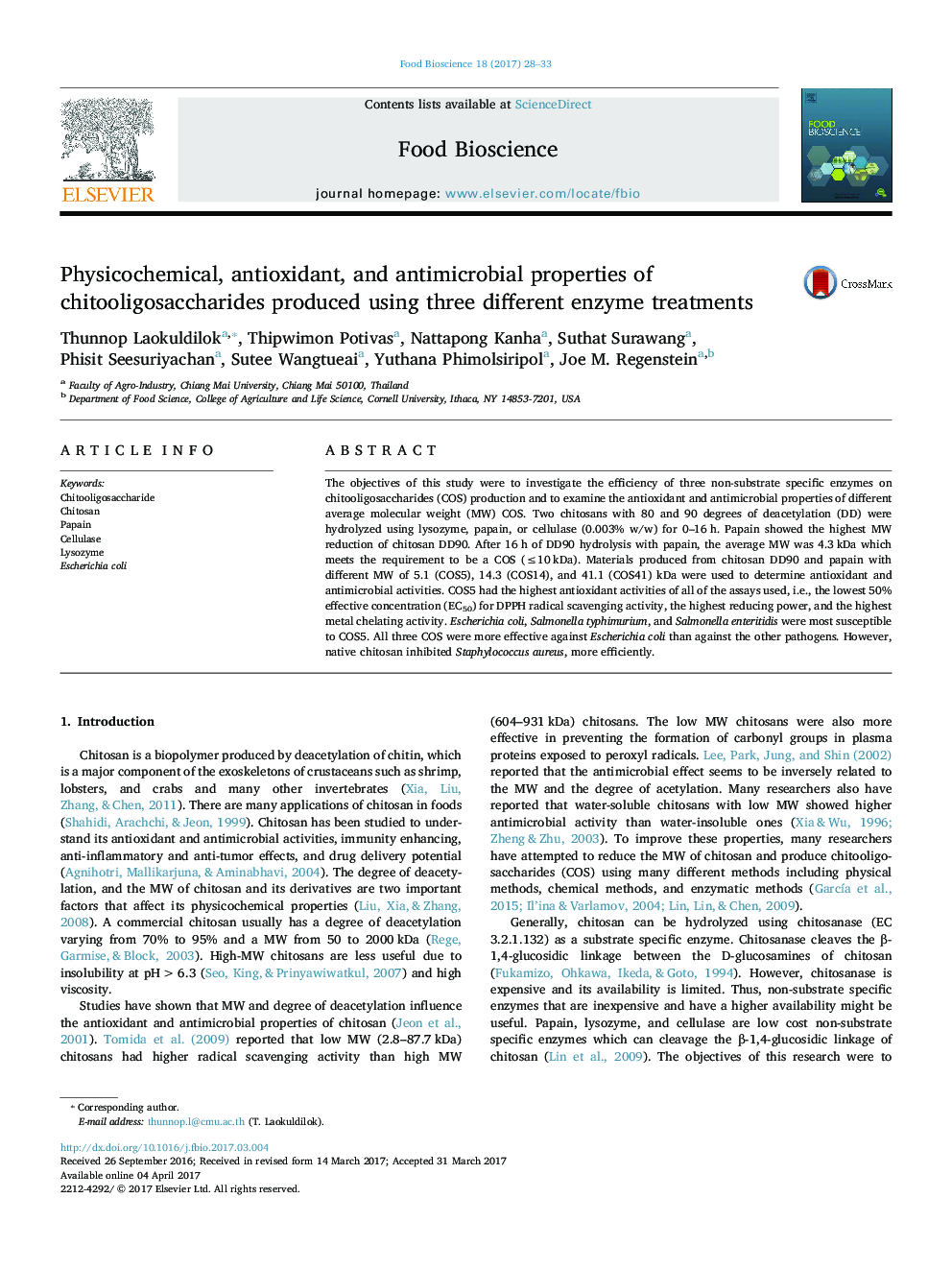| Article ID | Journal | Published Year | Pages | File Type |
|---|---|---|---|---|
| 6451790 | Food Bioscience | 2017 | 6 Pages |
â¢Initial MW and DD of chitosan, hydrolysis time, and enzyme affected COS production.â¢Papain showed the highest MW reduction of chitosan DD90.â¢COS5 had the highest antioxidant activities with all of the assays used.â¢All three COS were more effective against E. coli than the other pathogens tested.â¢Native chitosan inhibited S. aureus more efficiently than the COS.
The objectives of this study were to investigate the efficiency of three non-substrate specific enzymes on chitooligosaccharides (COS) production and to examine the antioxidant and antimicrobial properties of different average molecular weight (MW) COS. Two chitosans with 80 and 90 degrees of deacetylation (DD) were hydrolyzed using lysozyme, papain, or cellulase (0.003% w/w) for 0-16 h. Papain showed the highest MW reduction of chitosan DD90. After 16 h of DD90 hydrolysis with papain, the average MW was 4.3 kDa which meets the requirement to be a COS (â¤10 kDa). Materials produced from chitosan DD90 and papain with different MW of 5.1 (COS5), 14.3 (COS14), and 41.1 (COS41) kDa were used to determine antioxidant and antimicrobial activities. COS5 had the highest antioxidant activities of all of the assays used, i.e., the lowest 50% effective concentration (EC50) for DPPH radical scavenging activity, the highest reducing power, and the highest metal chelating activity. Escherichia coli, Salmonella typhimurium, and Salmonella enteritidis were most susceptible to COS5. All three COS were more effective against Escherichia coli than against the other pathogens. However, native chitosan inhibited Staphylococcus aureus, more efficiently.
Graphical abstractDownload high-res image (149KB)Download full-size image
